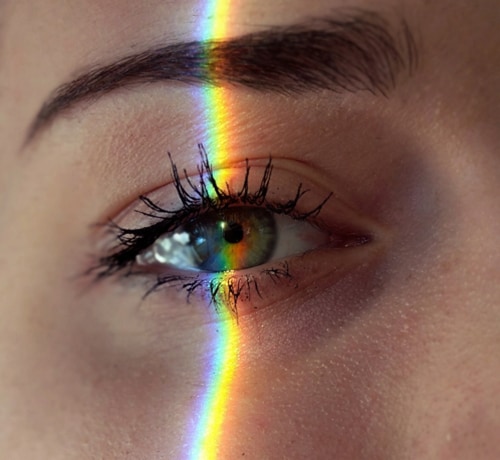
It’s easy to be overwhelmed on your first attempt to capture captivating food photos for social media. From lighting to props to product placements, there are many elements to consider when styling food photography for your CPG brand. What are some secrets to making those dishes look so good that you want to reach through the screen and grab them?
Here are a few tips for emerging brands:
1. Scroll Through Social Media for Food Photography Inspiration
Make sure that you’re plugged into all the latest social media platforms, like Pinterest, Facebook, Instagram, and TikTok, and following the most popular food accounts related to your niche. You never know when inspiration may strike. Start a Pinterest board or a new category for saved and bookmarked posts on Facebook and Instagram. By pinning or bookmarking content that spurs your creativity, you can easily reference those photos or videos next time you’re planning your social media content calendar.
2. Educate Yourself on the Latest Tips and Tricks
Plating fresh food and taking the perfect photo or video before the lettuce gets soggy or the ice melts can be tricky. Luckily, there are a lot of tips and tricks available for free to make your life easier. For example, to make a beverage appear cold and refreshing, you can add fake condensation to the outside of a glass using glycerin and water. YouTube is a great resource for learning how the professional photographers and videographers work their magic.
3. Selectively Choose Your Ingredients
Misshapen potatoes, an orange that is a little on the green side, or a carrot that bends a little to the left are all great conversation starters if you’re cooking for a group of friends. But when styling food, it’s best to use ingredients that are photogenic. Remember, your goal is to take a photo that inspires your followers to buy your product or recreate your recipe. To make your photos as appetizing as possible, splurge on heirloom tomatoes, trim the fat cap off your short ribs, and scour the supermarket for a perfectly ripe avocado. You don’t want anything about your shot to look hastily thrown together or poorly planned.
4. Set the Scene to Tell a Story
Although it can be good to use basic, unadorned plates or simple stainless-steel cookware that allows your food to be the star of the show, it’s also a good idea to add some background noise to your photos. Choose a colorful napkin that complements the sauce of your lasagna, or position a fork and knife to hint at the idea that someone is about to dig right in. Before snapping the photo, purposefully set contextual clues to tell a story to the viewer—position your props, add lighting to reflect the mood, and ask a friend to show off her stack of bangles as she serves a spoonful of roasted potatoes onto an empty plate. Setting the scene ahead of time ensures that the end product accomplishes your goal.
5. Edit Yourself
If you’re photographing a pizza, it may be nice to have a pizza cutter to one side of the shot, or maybe a glass of soda filled with ice cubes, but it’s better to do things in twos and threes. Be selective about what props you’re including so you give the user one main focal point. Don’t overdo it by adding too many competing elements in a single frame. If you want to capture an entire tablespace, you can always showcase several photos in a carousel format on Instagram. By creating a moment that encourages followers to stop and scroll, you’re increasing the likelihood that someone will engage with your content.
6. Use Backgrounds and Textures to Create Contrast
When it comes to selecting a background for your photo, reach for something that starkly contrasts your main focal point. For example, if you’re shooting vanilla ice cream in a glass bowl, opt for a dark, marble background. The difference in colors and textures will ensure the viewer’s eye is drawn immediately to the ice cream. You always want the food to be the first thing someone sees when they’re looking at your photo.
7. Keep Your Plate Balanced
If you pack your plate edge-to-edge with food, it’s going to look messy and unbalanced. It’s a good rule of thumb to leave a little bit of blank space on the plate. If you’re building a plate that showcases several ingredients—perhaps a single scoop of mashed potatoes, a nice cut of meat, and a cluster of Brussels sprouts—try arranging them in the center of the plate. If you only have one primary focus, use a smaller plate. Even though you want a portion of the plate to be visible, you don’t want it to be the first thing the viewer’s eyes gravitate toward.
8. Create an Imperfect Plate
When photographing food, it’s always good to add a little bit of life to the picture. Let’s say you’re photographing a freshly baked loaf of bread and you slice a few pieces at the very front to get that perfect shot of the inside. When you slice bread, there are bound to be a few crumbs that fall in your wake. Let them play an active part in your picture to set a scene that feels authentic.
9. Focus on Lighting to Capture the Best Shot
Number one? Turn off that flash. When photographing food, you want the picture to look like it’s lit by natural light. Therefore, it’s a good idea to experiment with your light source. Food and drinks tend to look better back-lit or side-lit so that the light wraps warmly around the subject. This creates depth and makes your subject look more appetizing. If you’re aiming to create food photography that looks staged, consider brightening the image with an overhead light source to eliminate any harsh shadows.
10. Find the Most Appetizing Angle of Your Dish or Product
Shooting an overhead shot of a cake with nine layers won’t do it justice. Your goal is to showcase the precision of your towering masterpiece by capturing the alternating layers of cake and icing with perfect clarity. On the flip side, if you’re photographing a loaded slice of avocado toast, a top-down shot featuring the speckles of cracked black pepper and an oozing egg yolk creates a drool-worthy photo of your dish. The key to beautiful food photography is considering the most appetizing angle of your dish ahead of time.






